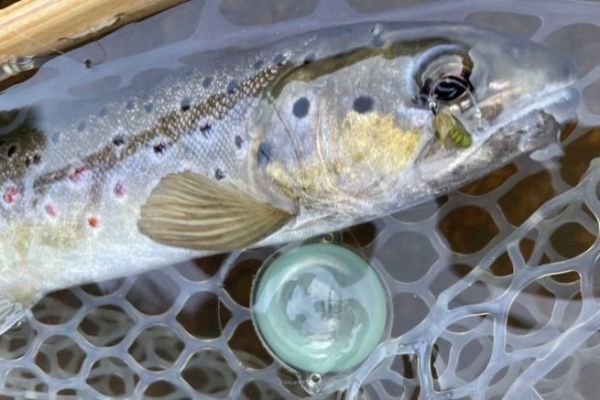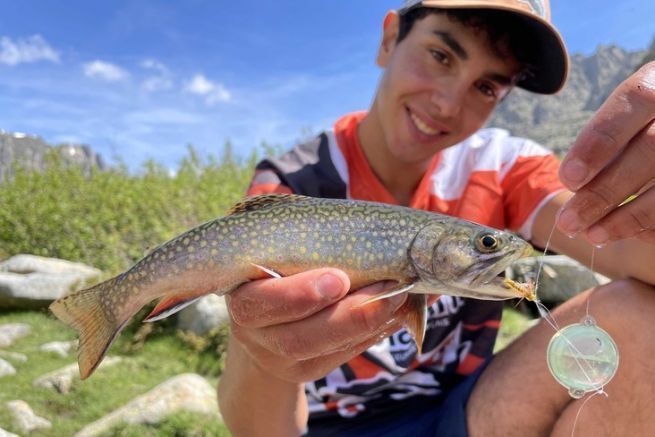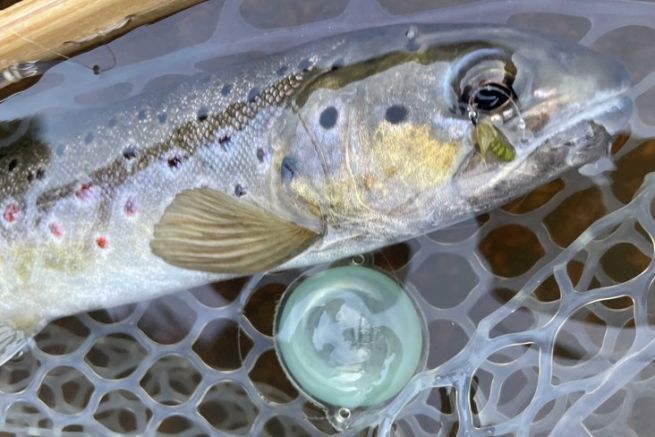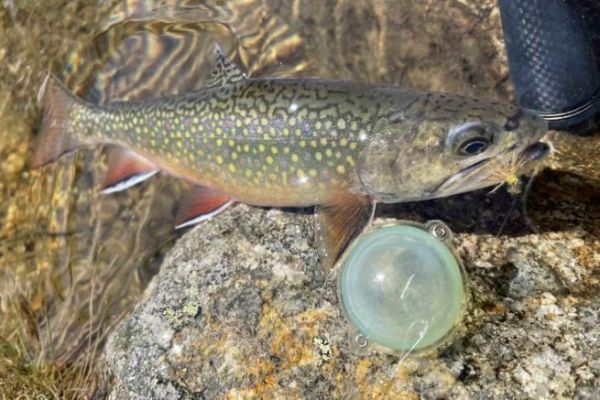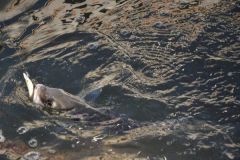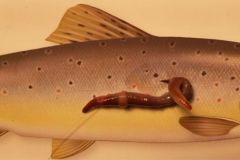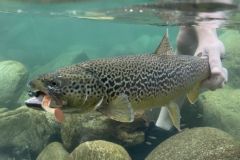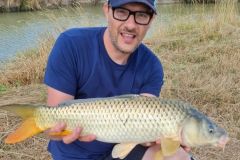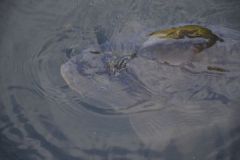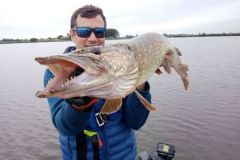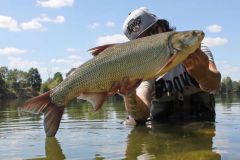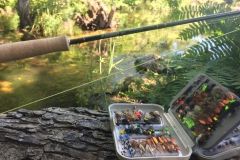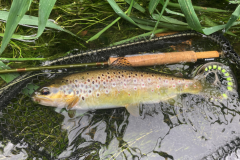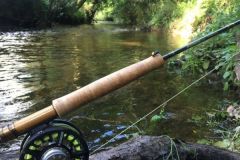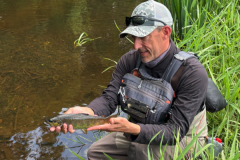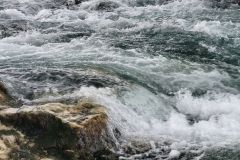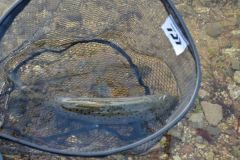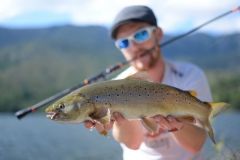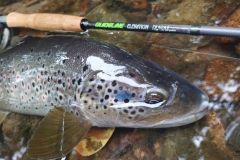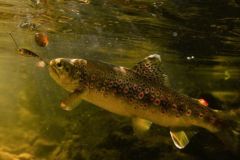The material for fly fishing with buldo in rivers
For river fishing, the easiest way is to use the same rod you use every day for lure fishing. The possibility of managing the weight of the buldo by filling it more or less will allow you to reach the high range of the power of your rod. The right weight will guarantee accuracy and good casting distance.
As for the length of the rod, choose a rod of 1.80m for small streams up to 2.20m for large and uncrowded rivers. A small and light reel, size 1000 to 2000, will do the trick and will be fitted with fine braid for a maximum of reactivity when striking, especially on sight gobbles.

The approach and fishing
Like many salmonid fisheries in rivers, the ideal is to go upstream. The fish generally have the nose facing the current, the approach will be much more discreet by arriving behind them.
Buldo fly fishing is also very effective in the current and allows you to quickly sweep all the water veins. The ideal is to cast your buldo upstream, in the waterfall or the beginning of the current, to guarantee a certain discretion at the impact. You can also cast just above, or even into the rocks, so that the buldo moves slowly downstream. The use of soft buldos is then essential to avoid that they break on the rocks.
Then let your rig drift at the speed of the current, recovering little by little the banner to keep it almost taut. Keep a close eye on the lead dry fly in order to see the slightest gobble, but also on the feeling in the rod if the touch occurs on one of the other flies. You will then have to strike immediately to ensure the catch.
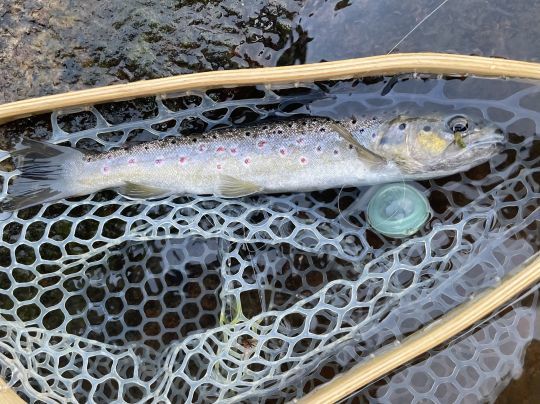
Animation
Although this technique is not really lure fishing, it is possible to "animate" your rig a little. During the retrieve, it is essential to keep the rod high in order to keep the dry fish on the surface. It is also possible to make it jump from time to time by putting small blows of the tip, thus imitating an insect laying eggs. This action on the rig will also bring up the other two flies, and it is very regular to take the bites at this time. Be careful, however, to do this action only in areas of current so as not to scare the fish in position with the buldo during the small shots.

 /
/ 